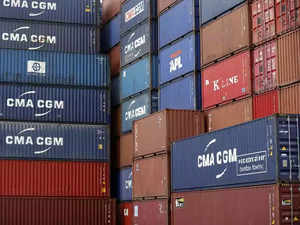 Agencies
AgenciesNegotiators of the Regional Comprehensive Economic Partnership (RCEP) bloc will meet on May 24 in an inter-sessional meeting in a bid to conclude the mega trade agreement this year.
RCEP is a regional trade agreement spanning the 10 Asean countries and the group’s six free-trade agreement partners — Australia, New Zealand, Japan, China, South Korea and India. Though talks on seven of the sixteen chapters of the agreements are complete, the key areas of goods, services and investment are still being negotiated.
In the April-January period of 2018-19, India’s merchandise exports to the region were $55.3 billion while imports were $145.9 billion, leaving a trade deficit of $90.6 billion of which $53.4 billion was with China alone in the whole of FY19.
While the aluminium industry wants aluminum and its articles in the negative list or the exceptions to products they want to open up for imports under RCEP, the copper association has sought zero duty on copper ore and concentrate to prevent inverted duty structure.
China is the largest producer and exporter of aluminium products with surplus aluminium capacity of 11 million tonne (MT) and gives subsidies such as interest free and low cost loans, subsidized land to new smelter projects, income tax and VAT rebates, and transport subsidy to its industry.
“The presence of China in RCEP is the biggest threat for Indian aluminium industry,” the Aluminium Association of India (AAI) said in a representation to the government. India is the third largest aluminium producer globally after China and Russia.
It said that despite having sufficient domestic capacity of 4.1 MT per annum (MTPA), more than 55% of country’s demand is being met through imports, most of which is scrap. 2017-18 witnessed the highest ever aluminium imports of 1.96 MT resulting in forex outgo of $4.5 billion, according to the association.
The industry also cautioned that the US-China trade war has prompted a dumping of surplus aluminium exports into India, which is reflected in the 21% increase in imports in Apr-Dec period in FY19 over FY18.
Citing a Niti Aayog study, the aluminium association said that India’s trade deficit with China for aluminum is around $690 million.
“If duty is further cut under RCEP, domestic aluminum industry will be severely hit,” it said.
As per the Indian Primary Copper Producers Association, increased copper rod and wire imports as a result of RCEP will have huge damage to domestic copper industry. It wants refined copper products in exclusion/negative list.
FTA violation
Attributing a majority of aluminium imports-most of which are Chinese origin- into India to the free trade agreement (FTA) that India has with Asean and Malaysia, the AAI highlighted that most RCEP countries together constitute 35% of total aluminium imports into India. These imports rose 17% on year from 591 kilo tonne in FY17 to 690 kilo tonne in FY18.
“It is hypothesized that China is exporting these goods to India taking benefit of China and ASEAN FTA (AIFTA) and possibility of breaching rules of origin,” the copper association said.
China through its “National Sword Policy” is curtailing import of scrap into their country. This policy once implemented may lead to dumping of copper scrap in Indian market and therefore is a potential threat to Copper Industry in India.











 Get Unlimited Access to The Economic Times
Get Unlimited Access to The Economic Times
